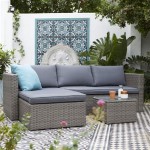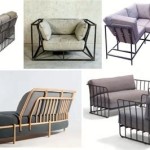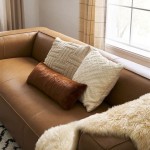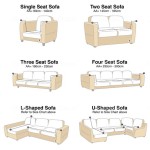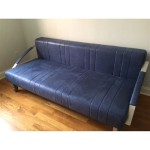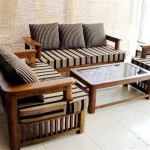Exploring the Diverse World of Bed and Sofa Designs
The selection of furniture is a crucial aspect of interior design, directly impacting both the aesthetic appeal and functionality of a living space. Bed and sofa designs, in particular, occupy a central role in determining the overall comfort, style, and usability of bedrooms and living rooms. Understanding the nuances of these designs, their evolution, and the factors to consider when choosing them is essential for creating harmonious and practical environments.
The evolution of bed and sofa designs reflects significant shifts in societal norms, technological advancements, and artistic movements. Early beds were primarily functional, often simple platforms constructed from readily available materials. As civilizations progressed, beds became increasingly elaborate, incorporating intricate carvings, luxurious fabrics, and innovative mechanisms. Similarly, sofas evolved from basic benches to upholstered seats of varying shapes and sizes, reflecting changing preferences for comfort and social interaction.
Modern bed and sofa designs showcase a remarkable diversity of styles, materials, and construction techniques. From minimalist platforms to ornate four-poster beds, and from classic Chesterfield sofas to contemporary sectionals, the options available cater to a wide range of tastes and spatial requirements. This article explores the key characteristics of different bed and sofa designs, highlighting the factors that influence their suitability for different spaces and lifestyles.
Key Considerations for Bed Design
Selecting the right bed involves a careful evaluation of several factors, including size, style, construction, and materials. The size of the bed should be appropriate for the room and the number of occupants. Standard sizes range from single to king, with variations in length and width to accommodate different body types and sleeping habits. The style of the bed should complement the overall aesthetic of the bedroom, whether it is modern, traditional, or eclectic.
The construction of the bed frame is a crucial determinant of its durability and stability. Solid wood frames are generally considered the most robust, while metal frames offer a lighter and more contemporary option. Upholstered bed frames provide a softer and more luxurious feel, but may require more maintenance. The type of mattress used with the bed is also a critical factor in ensuring comfort and support. Options include innerspring, memory foam, latex, and hybrid mattresses, each with its own unique characteristics.
Beyond the basic frame and mattress, other features can enhance the functionality and comfort of a bed. Storage beds, for example, offer valuable space-saving solutions for smaller bedrooms. Adjustable beds allow for customized positioning and can provide relief from certain medical conditions. Headboards provide aesthetic appeal and can also serve as functional supports for reading or watching television in bed. Careful consideration of these features can significantly improve the overall sleeping experience.
Materials used in bed construction also play a vital role in determining comfort, durability, and style. Wood offers a classic and timeless appeal, with options ranging from hardwoods like oak and maple to softwoods like pine and cedar. Metal frames are often constructed from steel or aluminum, providing strength and stability. Upholstered beds can be covered in a variety of fabrics, including cotton, linen, velvet, and leather, each with its own unique texture and appearance.
The height of the bed is another factor to consider, particularly for individuals with mobility issues. A lower bed can be easier to get in and out of, while a higher bed may provide better visibility and storage space. The choice of bed height should be based on personal preference and individual needs. Ultimately, the ideal bed design strikes a balance between functionality, comfort, and aesthetic appeal, creating a relaxing and inviting sleep environment.
Sofa Design: Functionality and Aesthetics
The sofa is a central piece of furniture in any living room, serving as a focal point for relaxation, conversation, and entertainment. Choosing the right sofa design involves considering its size, style, construction, and materials, as well as its intended use. The size of the sofa should be proportionate to the room, allowing for comfortable seating without overwhelming the space. Standard sofa sizes range from loveseats to sectionals, with variations in depth and height to accommodate different body types and seating preferences.
The style of the sofa should complement the overall aesthetic of the living room, whether it is modern, traditional, or transitional. Classic sofa styles, such as the Chesterfield and the Lawson, offer timeless appeal and can be easily incorporated into a variety of décor schemes. Contemporary sofa styles, such as the track arm and the mid-century modern, feature clean lines and minimalist designs. Sectional sofas provide maximum seating capacity and can be configured to fit a variety of room layouts.
The construction of the sofa frame is a critical determinant of its durability and stability. Solid wood frames are generally considered the most robust, while metal frames offer a lighter and more contemporary option. The suspension system of the sofa, which supports the cushions, also plays a vital role in ensuring comfort and longevity. Options include sinuous springs, eight-way hand-tied springs, and webbing suspension, each with its own unique characteristics.
The type of upholstery used on the sofa is another important factor to consider. Cotton is a durable and breathable fabric that is relatively easy to clean. Linen offers a more luxurious and textured look, but is more prone to wrinkling. Velvet provides a soft and plush feel, but requires more careful maintenance. Leather is a durable and classic option that develops a unique patina over time. Microfiber is a synthetic fabric that is stain-resistant and easy to clean, making it a popular choice for families with children or pets.
Beyond the basic frame and upholstery, other features can enhance the functionality and comfort of a sofa. Reclining sofas offer adjustable seating positions and can provide relief from back pain. Sleeper sofas provide a convenient option for accommodating overnight guests. Storage sofas offer valuable space-saving solutions for smaller living rooms. Careful consideration of these features can significantly improve the overall usability and enjoyment of the sofa.
Materials and Styles in Contemporary Bed and Sofa Design
Contemporary bed and sofa designs showcase a wide range of materials and styles, reflecting evolving trends in interior design and manufacturing technologies. Sustainable and eco-friendly materials are increasingly popular, including reclaimed wood, organic cotton, and recycled fabrics. Minimalist and Scandinavian-inspired designs emphasize clean lines, natural materials, and neutral color palettes. Mid-century modern designs feature iconic shapes, bold colors, and retro-inspired details.
The use of technology is also transforming bed and sofa design. Smart beds offer features such as adjustable firmness, sleep tracking, and integrated lighting. Smart sofas incorporate features such as built-in charging ports, wireless speakers, and voice control. These technological advancements are enhancing the functionality and convenience of beds and sofas, making them more integrated into the modern lifestyle.
The trend towards customization is also influencing bed and sofa design. Many manufacturers offer customizable options, allowing customers to choose the size, style, fabric, and features of their beds and sofas. This allows for greater personalization and ensures that the furniture perfectly fits the individual's needs and preferences. Consumers can often select from a variety of leg styles, arm styles, and cushion fillings, resulting in furniture that is truly unique.
The rise of online retailers has also expanded the accessibility of diverse bed and sofa designs. Online platforms offer a wide selection of furniture from different manufacturers and designers, allowing customers to compare prices and styles more easily. Virtual reality and augmented reality technologies are also being used to allow customers to visualize how different beds and sofas would look in their homes before making a purchase. This enhances the online shopping experience and reduces the risk of making a wrong decision.
Ultimately, the key to selecting the right bed and sofa design is to consider both functionality and aesthetics. The furniture should be comfortable, durable, and appropriate for the intended use, while also complementing the overall style of the room. Careful consideration of these factors will ensure that the bed and sofa are a valuable addition to the home for years to come.

Sofa Cum Bed Designs For Your Home Designcafe

Create The Perfect Guest Room In 15 Minutes Sofa Come Bed Modern For Small Spaces

Sofa Cum Bed Design A List Of Incredible Designs With S

51 Sofa Beds To Create A Chic Multiuse Space That Guests Will Love

Nill Boxton Fabric Sofa Cum Bed 3 Seater Light Brown Furniture

Modern Designer Sofa Bed For Home

Storage Armrest L Shaped Living Room Dual Purpose Sofa Bed China Cum Made In Com

Wooden Brown L Shape Sofa Cum Bed For Home Living Room

Sofa Cum Bed Designs Upto 50 Off 211 Latest In At Best S Gkw Retail

Sofa Cum Bed Designs For Your Home Designcafe

